Ep. 109: River’s Edge, by Kyoko Okazaki
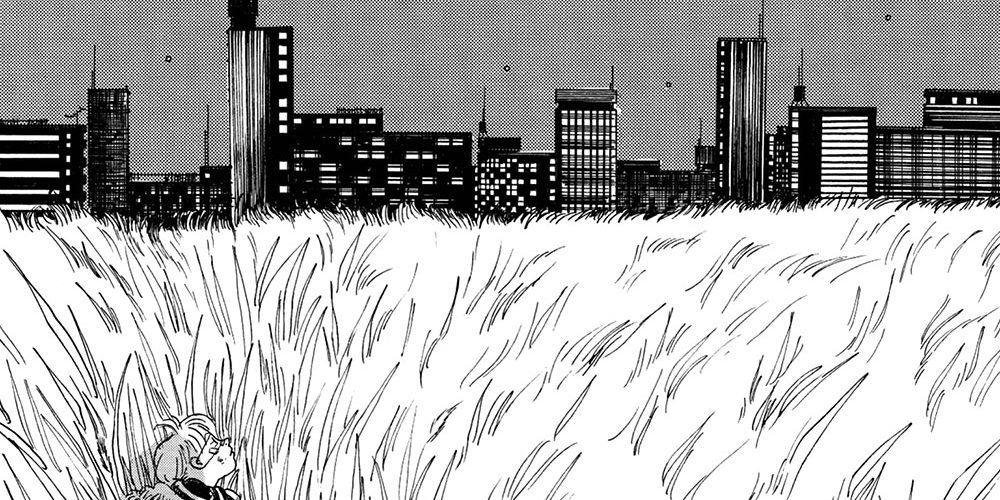
Happy New Year! For the first episode of 2024, we’re starting off with a fascinating, complex 1-shot manga, Kyoko Okazaki’s River’s Edge. In this mature-rated episode, we dig into the startling secret lives of teens in the 1990s, through the unique lens of the incredible josei manga creator Kyoko Okazaki. Don’t miss this episode!
Powered by RedCircle
Listen and Subscribe to the Podcast:
Google | Apple | Stitcher | RedCircle | Amazon | Radio Public | PocketCast | Spotify
IN THIS EPISODE
00:00 River’s Edge, by Kyoko Okazaki
65:26 THE BREAK
66:00 Shout-outs
Also, if you haven’t yet subscribed to Mangasplaining Extra, our weekly newsletter and manga publisher, check it out here!
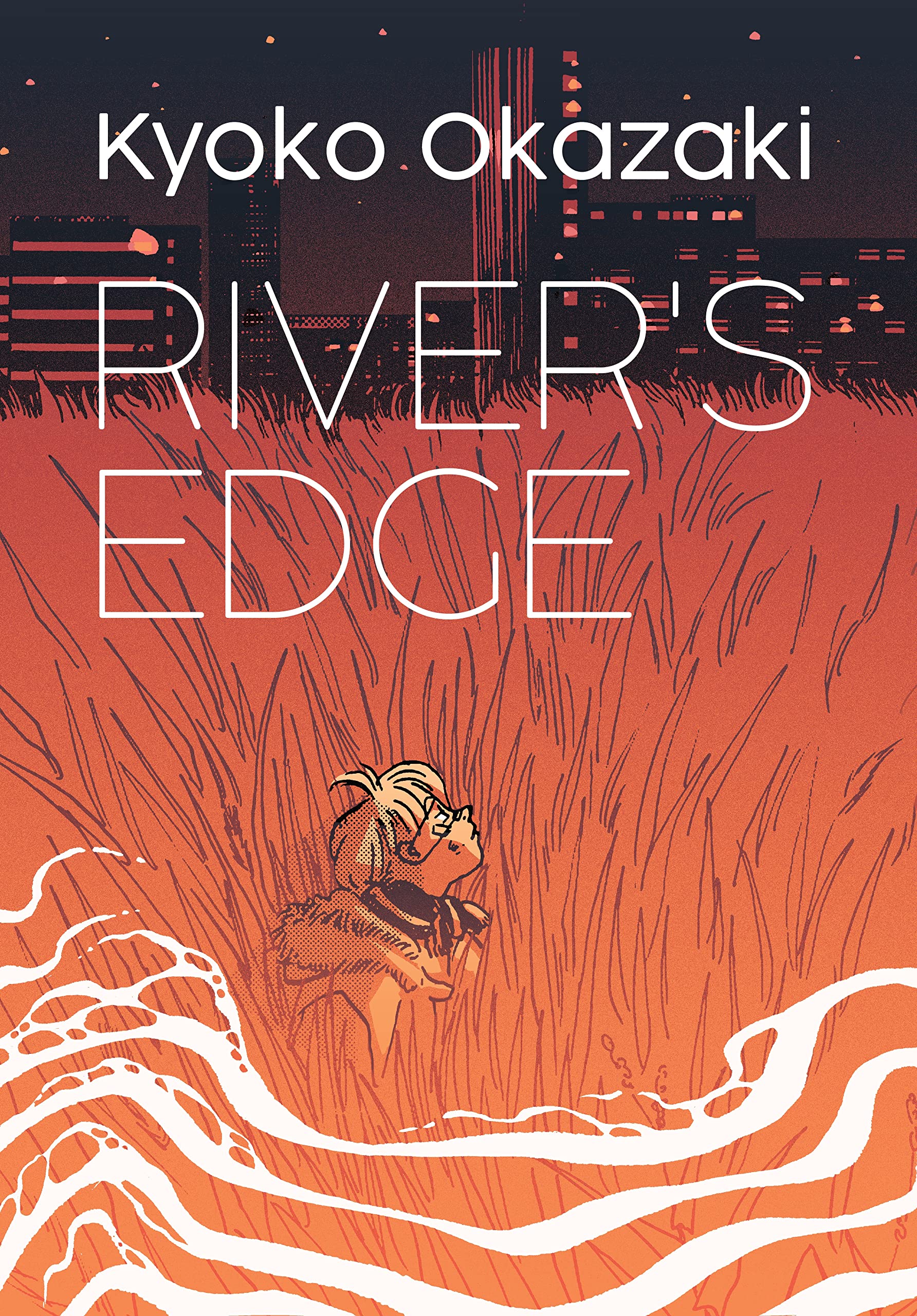
River’s Edge
By Kyoko Okazaki
Translated by: Alexa Frank
Editor: Ajani Oloye
Production: Risa Cho, Pei Ann Yeap, and Lorina Mapa
Published by Kodansha. Available in print / digital
Audio editing by David Brothers. Show notes by Christopher Woodrow-Butcher and Deb Aoki
BEFORE WE GET STARTED
And we’re back! Took a few months off for the Holidays. Hope you’re doing alright, and you were able to catch-up on the podcast!
I know the schedule has been a bit crazy for season 4. It’s almost entirely my fault (Christopher). Sorry about that! Time management is a skill I’ve never possessed, and while I’m doing better (despite more travel in 2023 than ever in my life), it’s still not like, a strength you know? Still, new year, new me, and I’m looking forward to a more productive, regular sort of year. Fingers crossed!
Content Warning:
This book is a heavy one. It contains references to rape, sexual and physical abuse, suicide, anorexia, and murder. Violence towards animals, too. It has more light-hearted, slice of life type moments too, but it is a heavy book at times.
Also, SPOILERS. We dig right into it.
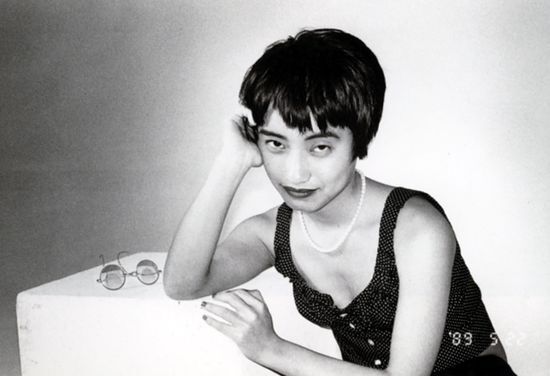
ABOUT KYOKO OKAZAKI
Kyoko Okazaki was born December 13, 1963 in the suburbs of Tokyo. She got her start while still in high school, submitting illustrations and short comics to various fanzines before being discovered by legendary editor Eiji Otsuka just after graduating. Her work reflects the lives of young women in the 1980s and 1990s, with realistic dialogue, scenarios, and characters… albeit sometimes slightly exaggerated. Her work is called complicated, aggressive, and controversial, but it is also deeply beloved by a generation of readers.

Okazaki’s assistants and contemporaries made their way to English-language publication more than a decade before Okazaki herself. Some of these works were published in English, including Happy Mania by Okazaki’s former assistant Moyoco Anno, and Okazaki’s contemporary Erica Sakuraza with a whole self-titled line of short stories and one-shot books debuted from Tokyopop during the manga boom in the late 1990s/early 2000s. Okazaki’s work was more challenging, both in form and in content, so it did take a while for Okazaki’s manga to be published in English, with both Pink and Helter Skelter published in 2013 from Vertical (now Kodansha).
We covered Helter Skelter by Kyoko Okazaki allll the way back in Episode 4 of the podcast.
The books, according to then EIC Ed Chavez, sold very poorly at the time. They can be found in print, but they’re also available in digital format too. Go visit Kodansha’s website for more on Pink and Helter Skelter — they’re definitely worth a look.
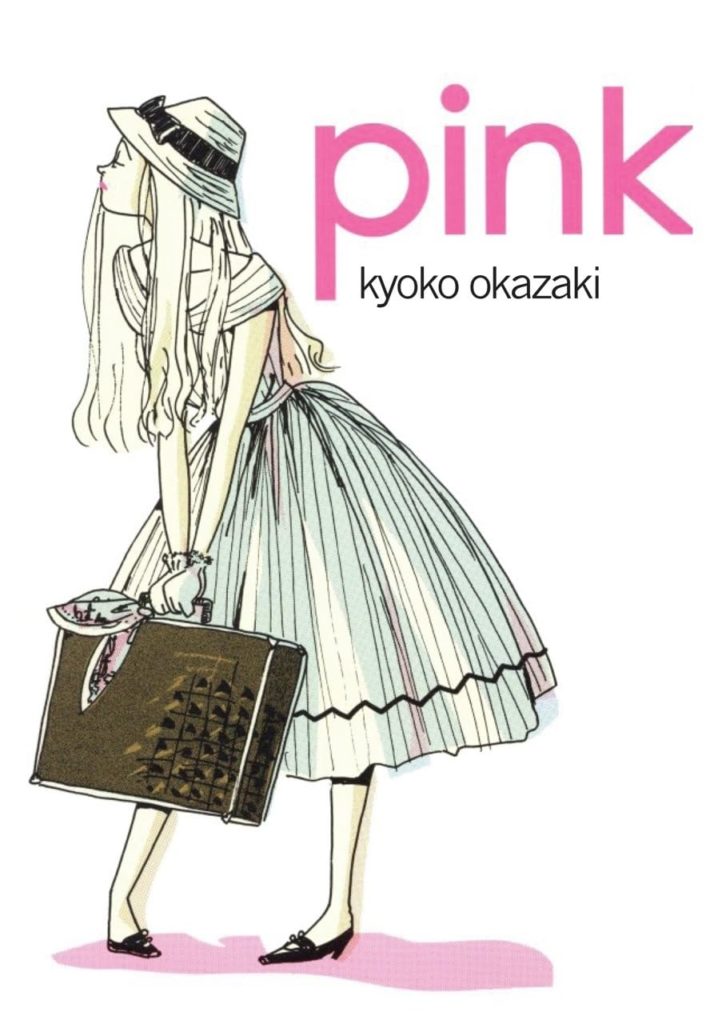

The thing is, though? They’re awesome, but yeah, they’re difficult reads. Skirting the line between reality and fantasy, sometimes metaphorical and sometimes surreal, especially 20 years removed from their original publication. Still, these books found some real fans who kept banging the drum for her work. The ongoing support for Kyoko Okazaki in the weirder corners of the manga internet have helped Kodansha release River’s Edge in 2023, which we’re discussing on the podcast today.
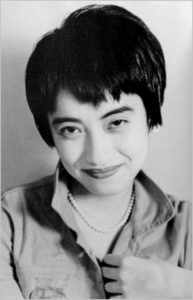
At the height of her powers in 1996, Okazaki’s career was cut short by a tragic car accident where she was hit by a drunk driver. She has been on hiatus ever since.
For more on Kyoko Okazaki, I highly recommend reading this long-form biography from the blog Ceiling Gallery, itself written in 2013: https://www.ceiling-gallery.com/blog/2014/11/10/okazakikyoko
“The other weekend I attended a talk show featuring Okazaki’s closest friends, former assistant Anno Moyoko and contemporary Sakurazawa Erica. Okazaki matters to them because she’s real. Her dialog sounds the way people actually talk. Her characters deal with problems that polite society could never understand. Most of all, Okazaki is true to herself.”
-Ceiling Gallery
…and thanks to Dave for the shout-out in the comments of that 9-year old blog post. 😉
ABOUT RIVER’S EDGE
From renowned author, Kyoko Okazaki, the creator of Helter Skelter and Pink, comes a story of adolescence filled with friendship, drama and intertwined relationships of six high school friends.
At the edge of the city not far from the sea, a field of goldenrod sways in the breeze, its veil of amber flowers obscuring secrets underneath. Old bones and forgotten memories rest in silence, waiting for someone to dig them up. This is where the lives of six young men and women intertwine in ways both tragic and extraordinary. Decaying secrets are revealed as they forge friendships from pain, find betrayal in pleasure, and stare into the face of death itself—in a field of gold by a stagnant river, under the smoke-filled skies.
Kodansha
This description does not do the work justice, as you will soon find out. Serialized from 1993-1994, River’s Edge deals with heavy themes like teen sexuality, abuse, homosexuality, basically everything in the content warning up top, in a way that felt real to its readership. It did so in an unflinching, non-judgmental way, that also helped to show that the ways that these kids felt they had to live weren’t really their only options. It made a profound effect on its readership, as we’ll see in a moment.
00:45 Yeah, I know. “Oh this is recent, it came out in June” and you’re reading this in January. So like, kind of recent? Recent enough that it should have been on everyone’s best-of-the-2023 list? But probably wasn’t?
7:51 It’s true, the tribute book to River’s Edge is a thing. It’s called Edge of River’s Edge: Searching for Kyoko Okazaki, and was released in 2018. I was so shocked and happy to see something like this… Not quite a scholarly work (there’s lots of those!) but a heartfelt tribute to a specific title. And with some incredible contributors too, including manga creator Inio Asano and artist Yoshitomo Nara. Very cool.
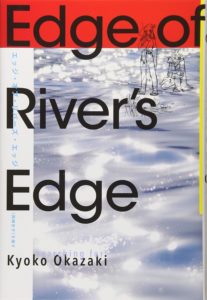
9:00 Yeah, I mentioned Riverdale, the edgy contemporary remake of Archie. It lasted for seven seasons and actually just ended, with its final season now available on Netflix. Reception was mixed.
10:25 Of course, the success of Riverdale led to gritty re-imaginings of other “kids” properties, and that brought David to the much more mature Nancy Drew. I think by the same people, actually.
11:05 Deb comes back to this at the end of the episode, but this sequence of the man trying to call his dog back, and his dog comes back with a bone… It’s chilling once you figure it out. It’s so subtle at first.

11:45 Yeah, I was having a whole moment with Tim Robinson’s I Think You Should Leave.
More on Tim Robinson’s oeuvre in the shout-outs.
13:00 Here I mention the work of Minami Q-ta, specifically Not All Girls Are Stupid, originally published in 1996 and then in English in 2023 from Starfruit Books. We did a whole episode on that! Go check it out!
14:00 So Deb mentions how Gekiga evolved, and then sort of glosses over it, so I should probably uh, fill that in just a bit?
The short-ish version is that as manga was becoming more and more popular in the 1950s Post-War era in Japan, it was a time when cheap, disposable entertainment was at a premium.
At the time, manga, which can be translated as “irresponsible pictures” or “whimsical pictures,” was mostly for kids and teens, with Osamu Tezuka and his contemporaries at the forefront. But as manga got more popular, a second generation of creators who studied under Tezuka wanted to create more serious works for grown-up reaaders. So in the late 1950s and into the 1960s, a creator named Yoshiharu Tatsumi coined the term “gekiga,” meaning “serious pictures.” Tatsumi and his peers created stories that were more directly influenced by film noir, crime novels, and ‘adult’ cinema in general. They created original book-length stories for grown-ups within the kashihon system, where readers could visit a rental manga shop and pay to “rent” / borrow manga to read. This was a practical, inexpensive way for people to enjoy manga without having to spend a lot of money or have to store books at home (which is a thing in Japan, since houses/apartments tend to be smaller than their N. American counterparts).
From these “rental manga” beginnings, gekiga evolved in a number of ways. Some work got more gritty and violent, some included stories that were more political and historical, some included images with more aggressive sexuality, while others moved toward telling more “realistic” stories about the struggles of everyday life in modern Japan.
Gekiga started as a response to manga, but it took some time to develop its visual and storytelling language. It kept evolving into something more challenging and unique… before ultimately being swallowed back up into the mainstream manga industry. The underground creates the revolution, then the mainstream adapts to it, and creates the need for new underground movements. This is pretty much the case with what Okazaki-sensei did with girls’ and ladies’ comics.
14:30 Small moment of disagreement with Deb here: The “sunshine and sparkles” of shoujo manga are still there in River’s Edge. The girls talk about boys and makeup and all that, it’s just tainted in Okazaki’s work. The girl with the cool makeup? She got it from sleeping with her boyfriend, a married man more than twice her age.

16:45
“Even if you know what’s going to happen, when it happens it’s so much worse than you imagined.”
David Brothers, Mangasplaining
19:55 Here’s that William Gibson quote. Click to enlarge.

22:00 Here’s that “SAFE SEX” spread, which really does feel like Okazaki’s zine roots coming through, as she speaks directly to the reader.

23:20 This conversation between Inoue and Kannonzaki is brutal and real, and respect (and self-respect).
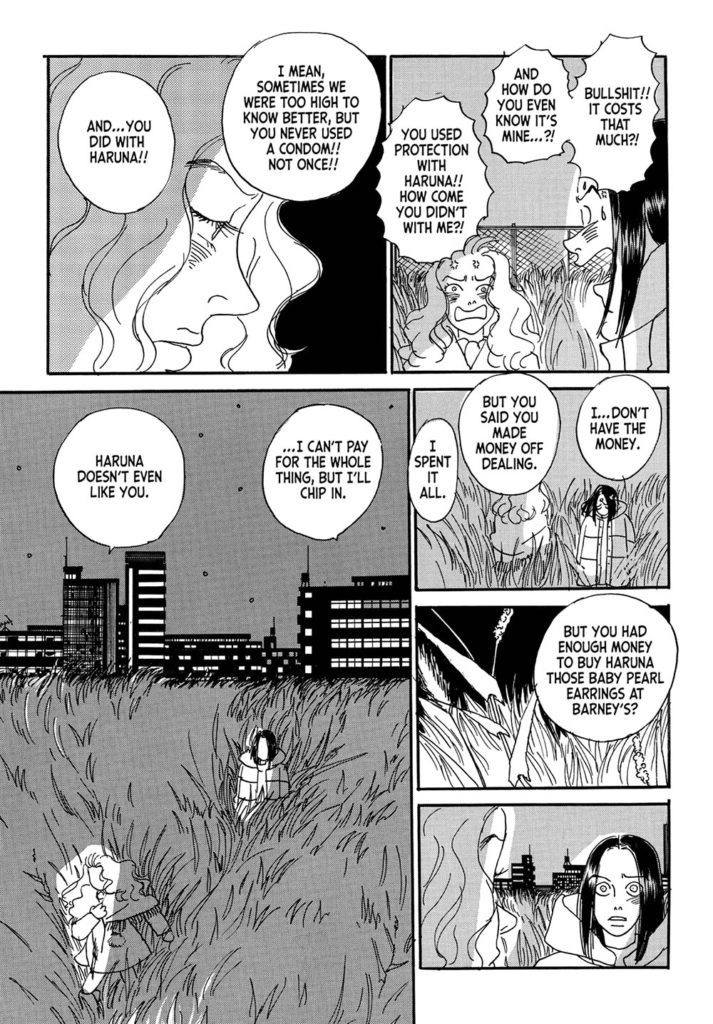
25:00 David really liked this sequence, about sex and communication.

28:00 When you realize that gossip mags have leaked every single detail of your life and all of your school chums read it? Like, yikes.

29:20 David mentions the manga Blue Spring by my favorite manga creator Taiyo Matsumoto. Blue Spring is a collection of short-stories by Matsymoto, published in 1993… The same year as Okazaki’s River’s Edge. I think David makes a pretty incredible connection between the two works here. Matsumoto has cagily said that his stories in Blue Spring were as influenced by his real life as Okazaki’s stories about young women were about hers. This is a prime candidate for a future episode of Mangasplaining, actually.
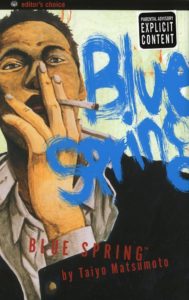
…or it would be, except unfortunately, despite David’s comments, it doesn’t actually look like Blue Spring is available on Kindle? It’s been removed from the VIZ website as well? This is really strange, as VIZ is still very-much seems to be in the Taiyo Matsumoto business. Maybe they’re doing a new edition someday? Regardless, I can’t find it for purchase now and the print edition is VERY unavailable, so please post in the comments if I’m just missing it.
As for that story…

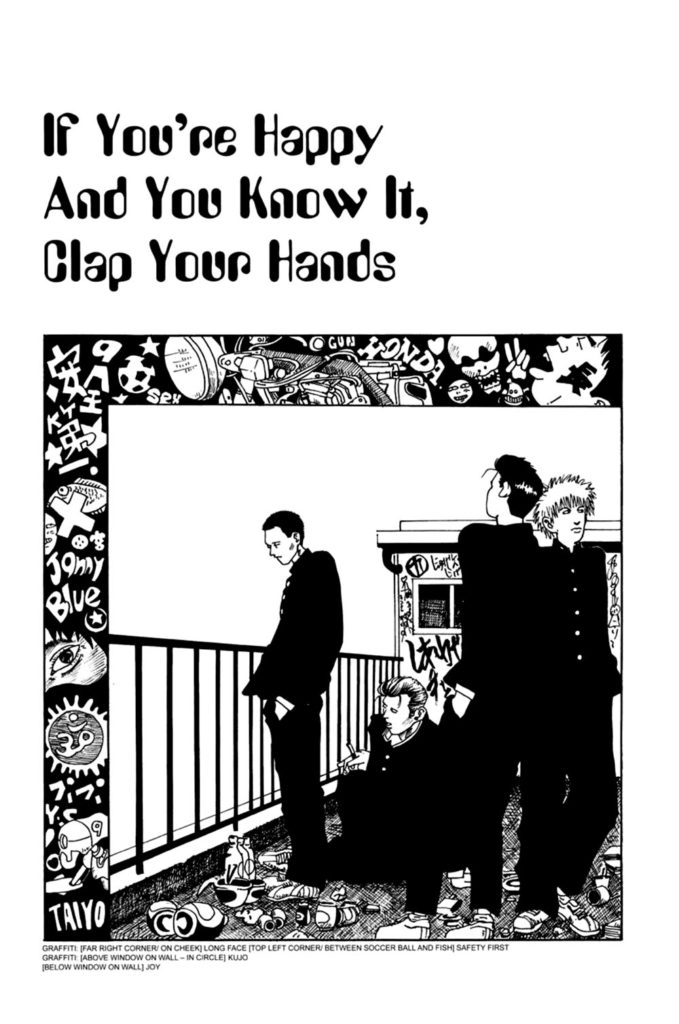
That story is actually called “If You’re Happy And You Know It Clap Your Hands” and it’s the first story in the book. The story that David mentions with the gun is called “Revolver,” and it’s an adaptation of a short story by Japanese writer Caribu Marley (Garon Tsuchiya), who is probably better known for co-creating the original manga Old Boy, which became an international alt-film phenomenon.
[DEB:] The manga version of Old Boy is available from Dark Horse Comics — although it came out in print quite some time ago, so your best bet is to read it as a digital version.
35:00 This whole rant about depictions of women in manga should be a separate article, but if someone’s already said it better or more eloquently, let me know in the comments and I’ll edit it in here.
38:17 David shouts out the great background gags on Page 156.

39:27 Likewise, Kyoto Okazaki draws a magazine that her work appears in on the floor of Haruna’s bedroom. Of course, there are notes that explain it too. 🙂

44:54 Speaking of notes from the translator, I think this particular page takes the cake.

46:10 Get some period-accurate Japanese television commercials in your life.
Meanwhile, in America, here’s a commercial that, like “Where’s the Beef?” or “Time To Make The Donuts” became a staple of mainstream culture.
47:10 David makes a fun note about the cute little trucks that Akira Toriyama draws in Dragon Ball, and his realization that Japan really does have a bunch of cute little trucks riding around.
[DEB:] Fun aside — there’s a very cute little Japanese fire truck that has become a bit of an Instagram star in the San Francisco Bay Area. You can follow Kiri the Japanese Fire Truck at @teenytinyfiretruck.
Here’s a fun blog post that talks a little about Toriyama-sensei’s mechanical design.
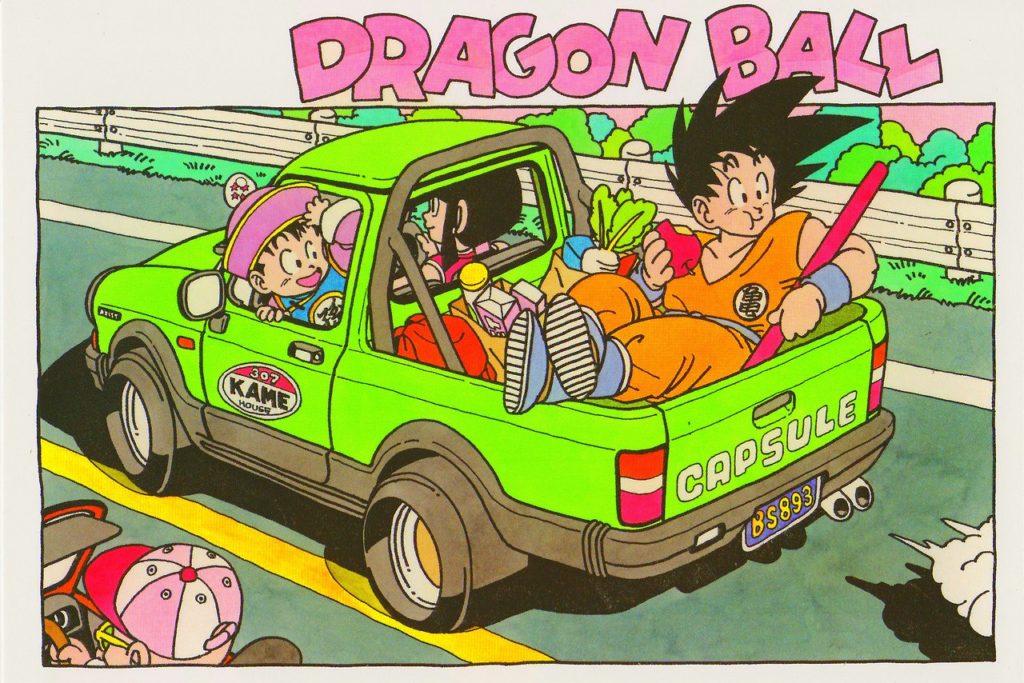
48:20 Chip mentions this intense transition between a blowjob and pizza… which is very effective.


50:55 Deb mentions a few great sequences where screentone is well-used in Okazaki-sensei’s inimitable style:
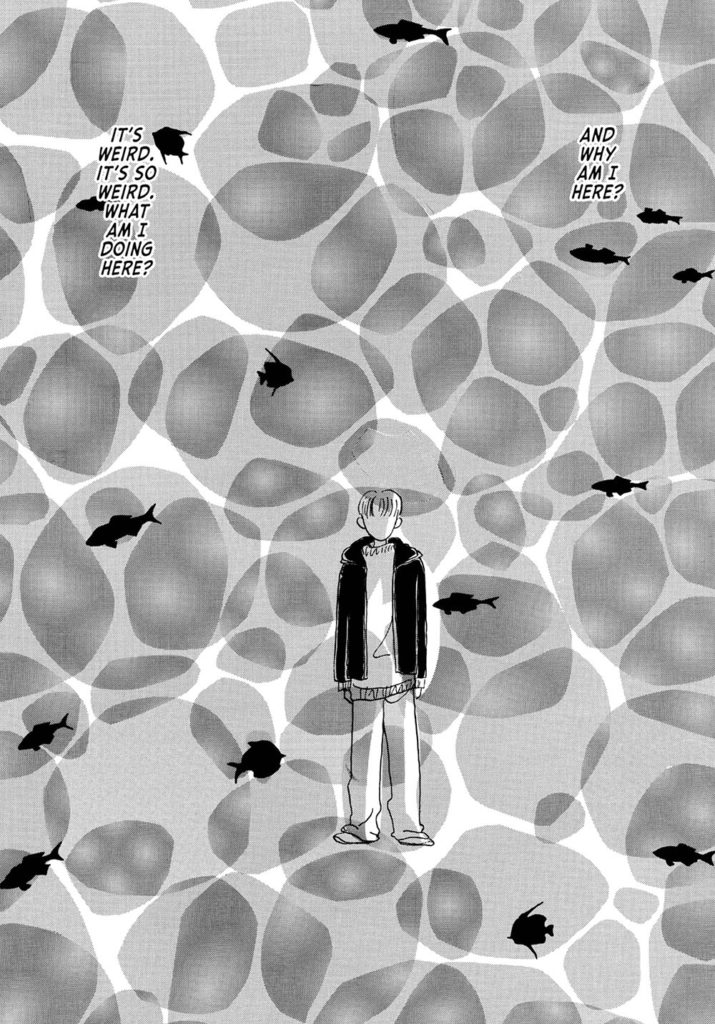
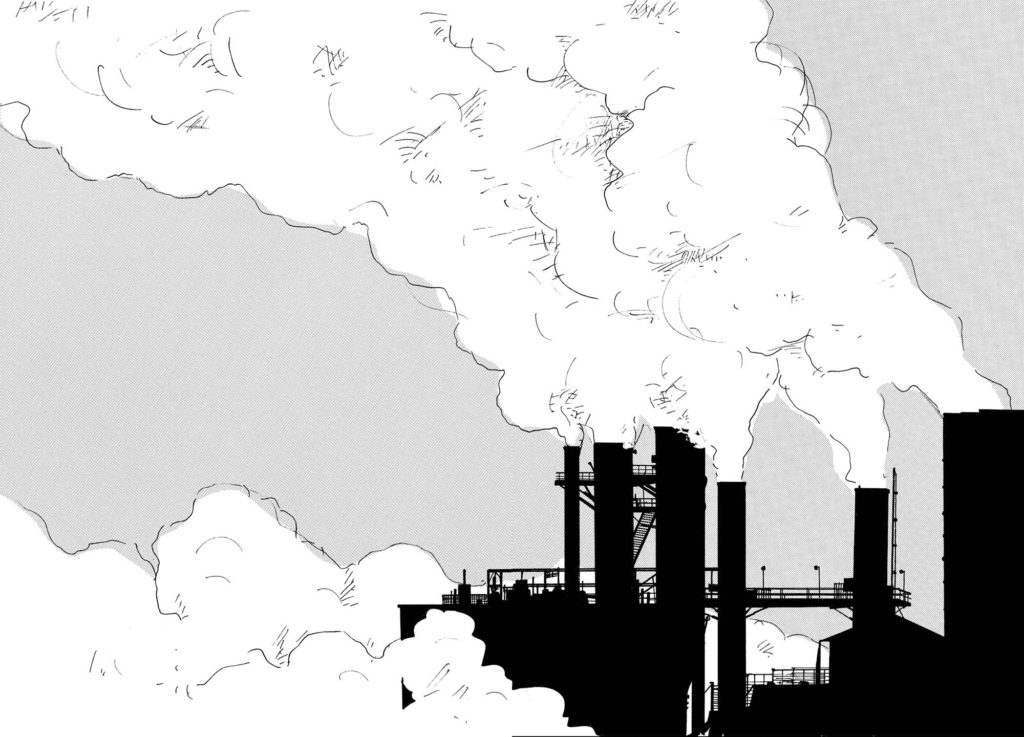
56:30 Shout out to Becky Cloonan for her beautifully designed cover for this volume, and the page that it comes from. I think a few people thought that Becky drew the cover, but instead it’s actually from a page within the book and expertly chosen by Becky.

I wanna take a second to point out that I also really love the Korean edition’s cover, which is deliberately evocative of an oil slick in a puddle, maybe against a river’s edge? Designed by Sparks Edition Korea, check out the whole brief.

59:50 While we were all a little trepidatious when starting this book, for David it clicked on page 14. “I speak for the sake of speaking.”

64:53 And yes, the River’s Edge manga was recently adapted into a brand new live action film (and it’s not the Keanu Reeves movie with the same title from 1986).
And that’s an episode of Mangasplaining! Stay tuned after the break for shout-outs!

65:26: THE BREAK
It’s time for Shout-Outs!
CHRISTOPHER Shouts-Out Tim Robinson’s I Think You Should Leave as he mentioned up top. He also mentioned that you can just, straight up type “La Jetée” into YouTube and watch the whole movie. (I’d been meaning to watch it forever, and then I did. Yes, this is absolutely piracy. I don’t know what to tell you, but I’ll not make it a habit.) David also recommends movie ‘rentals’ at Archive.org.
CHIP piggybacks on Chris’s recommendation for I Think You Should Leave, with his first work on Netflix in an collection of one-shots, The Characters.
Chris says: I also did a little digging and it looks like Tim Robinson was on a shot called Detroiters before all of this, so I’m happy to search that out now too. Maybe you will be as well?
DAVID recommends playing Fighting Games, y’know? Street Fighter games with your pals. Friendship! Very Shonen Jump.
DEB recommends the book Hallyu!, meaning “Korean Wave.” An overview of the Korean cultural phenomenon currently enjoying immense popularity right now, as covered in this exciting-looking exhibition that ran at the Victoria & Albert Design Museum in London.
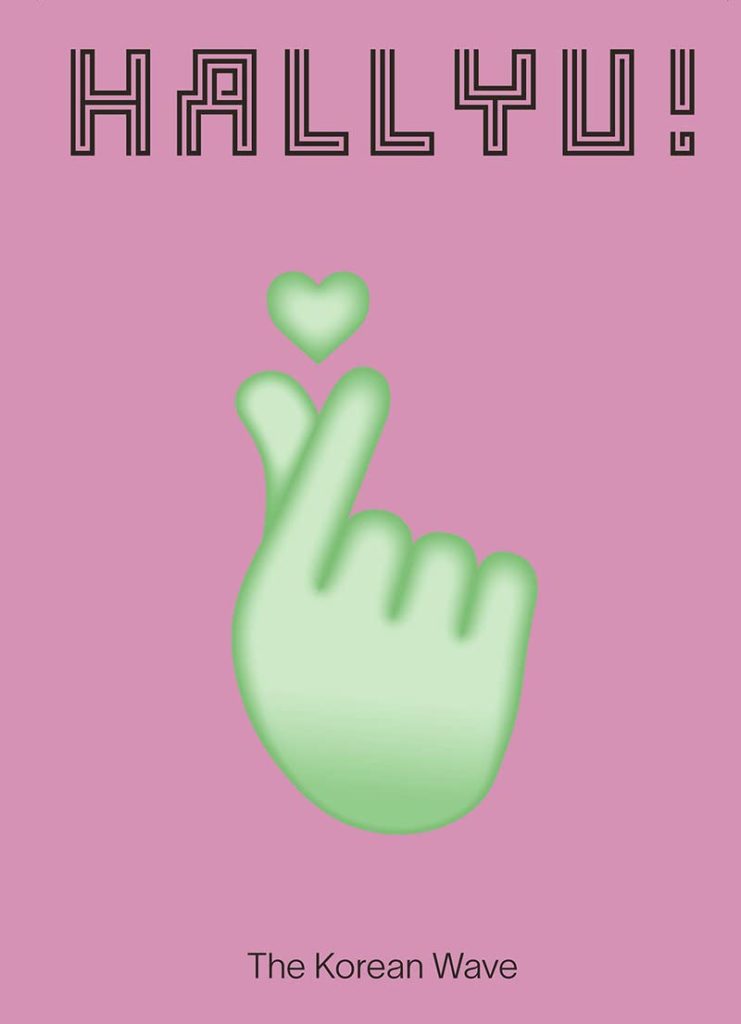
And that’s this week in Mangasplaining! This episode is also available wherever you get your podcasts, so please subscribe and leave a review, so others can discover our show.
Also, if you’d like to get the latest episode delivered straight to your inbox along with exclusive interviews, articles and new chapters of manga you can’t read anywhere else, subscribe to our Substack newsletter. See what you’re missing at Mangasplaining Extra!
Next week on Mangasplaining:
Get ready for The Yakuza’s Bias! K-Pop meets Japanese mafia? Sign me up!
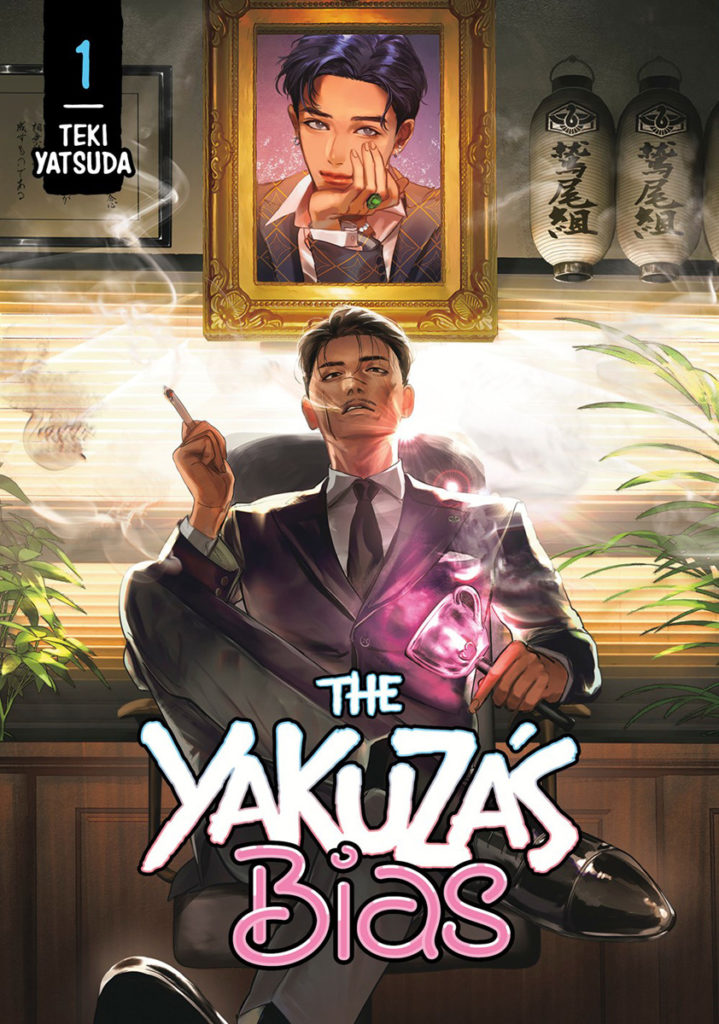
Thanks so much for listening! Please support your local comic and manga specialty shop when purchasing these books, and you can find one near you at comicshoplocator.com. You can also check your local library for print and digital lending options, they have TONS of manga! Finally, thanks to D.A.D.S. for their musical accompaniment for this episode.
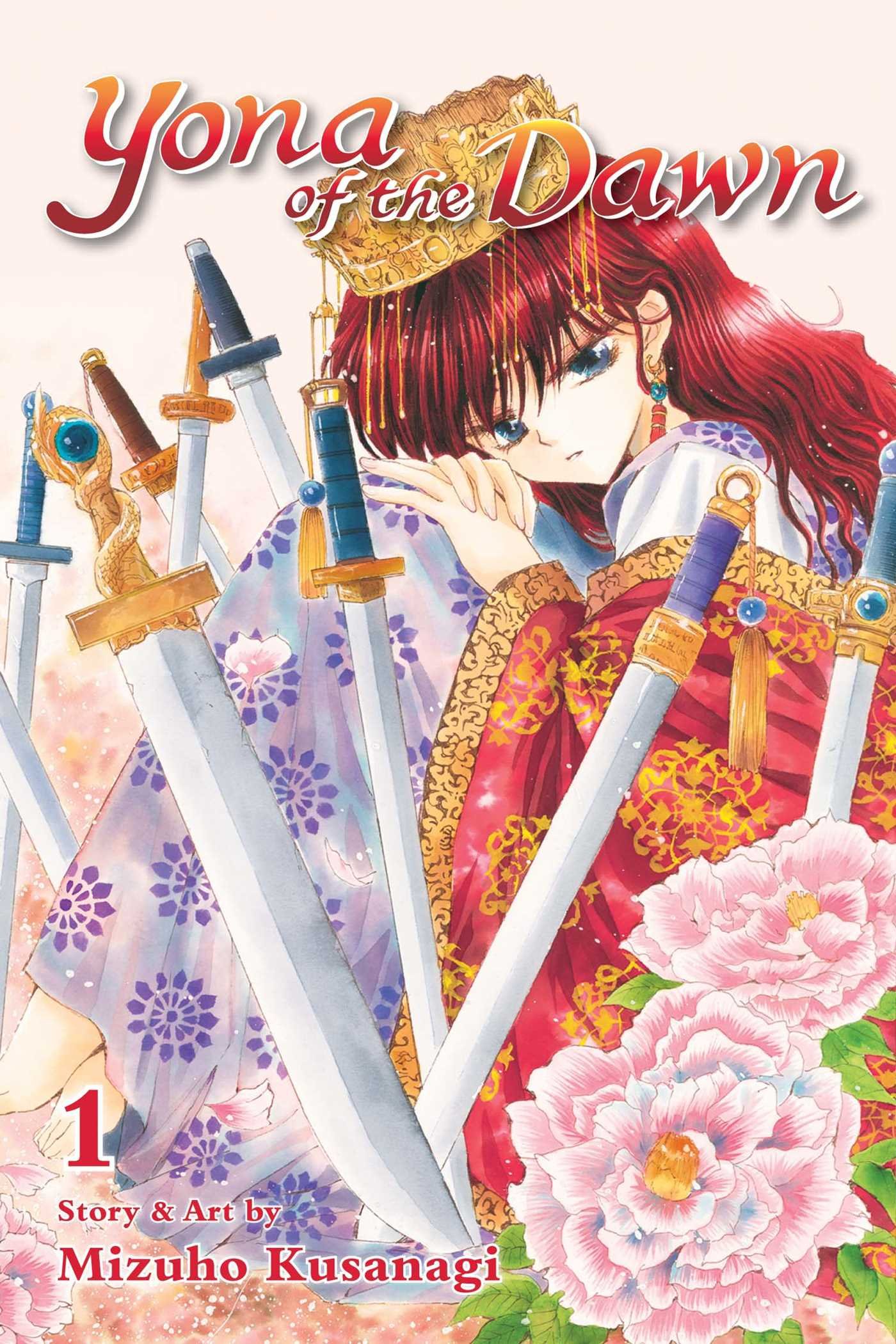
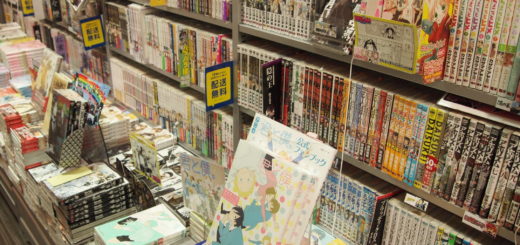
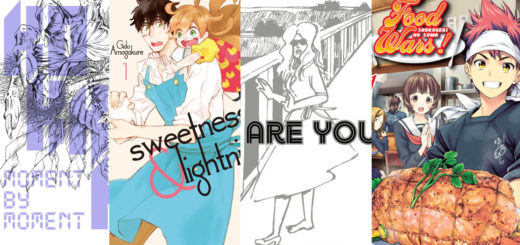
Great episode—and worth the wait. I’m just glad to have had a chance to listen to a thoughtful discussion about a book that’s stuck with me for so long.
Before I forget, one thing I was surprised never got mentioned at all (maybe it was edited out?) is that Kozue Yoshikawa becomes an important player in Helter Skelter. And going back to that manga, I don’t think it’s just Okazaki pulling a Tezuka and re-using a character model (and name, and occupation…) but the timelines seem to add up, even if Helter Skelter with its verging on sci-fi plastic surgery thriller aspects feels like it takes place in a much more surreal universe. I remember noticing this 20 years back when I read the French Okazaki releases and trying to see if her other manga seemed to have any crossovers but I didn’t find any (I suppose Pink, with lead character Yumi having a pet crocodile would make it at odds with the heightened, but realistic feeling world of River’s Edge.)
So yeah, I read the French books in my early 20s (aside from the three titles we have in English, the other two French releases were the rather surreal Rock and the two volume Tokyo Girls Bravo, both also Cutie titles that came between Pink and River’s Edge. (Bravo is, out of the Okazaki titles I know well, the least upsetting and most slice-of-life of her titles.) A lot of Okazaki’s earlier stuff I’ve checked out I think would be particularly hard to market here, but I hope there’s a small chance Vertical/Kodansha might consider it (though it’s amazing we have River’s Edge which I swear I had heard was meant to come out 10 years back but then the other two volumes sold so poorly.)
I’ve rambled long enough in the comments here about what’s josei, and how much it’s an actual thing, but I always got the impression from the manga in Cutie that its target readers bordered older high school and younger college (Rock is about 20somethings…) But I liked what Christopher pointed out that on one hand we look at River’s Edge and are all “This is for teen girls?” (despite Kodansha’s 18 rating) but on the other hand a lot of older targeted YA stuff deals with a lot of these same things, although maybe not all in one book.
When I read it the first time, it definitely felt very real to me, and was even catharthic to recognize that, even though I was a few years out of high school. I wasn’t bullied in school for being gay, but it was mostly because I was in the closet since I certainly saw, and didn’t do much to stop it, other gay students being bullied. And I certainly had nihilistic friends—I went to a relatively wealthy high school focusing on the arts in Victoria, but these characters felt realistic to me (and while I wasn’t having much sex—certainly not with other students—the kids I hung out with were, as well as a lot of them were even weekend casual drugs users—I found out later that other schools had dubbed our school Coke Bay, instead of Oak Bay, High…)
Reading it now after years of not having read it, and forgetting so many of the little details, obviously it reads differently to me, but I do think it’s an amazing work. Like you all stated, I did have to go back and re-read bits, but actually that made me appreciate it even more (and again, like Christopher, I appreciated the notes. Chip’s criticism of notes in fiction being information that an author should drop unless they can include it in the overall narrative is valid, except I think when it’s *translated* fiction that no longer applies.)
According to my friend at Toshonie who I think knows everything about shojo history, the title was so big that it’s what got Okazaki taken up by the much bigger josei (or is it?) magazine Feel young for Helter Skelter. And I always find that interesting, because it’s obvious Okazaki’s work was a huge influence on a lot of the Feel Young mangaka, especially at the time, they did take a slightly more commercial take on Okazaki, art and story (in your notes you mention Erica Sakurazawa who was a regular at the magazine, Moyoko Ano, as well as the “other” Okazaki, Mari Okazaki, and Tokyo Pop in the 2000s certainly tried harder than any other English publisher to make josei work, focusing especially on Feel Young titles, though I think only Happy Mania was much of a success. But I’ll always be thankful to them for their 6 Sakurazawa volumes, their surreal two volume Passion Fruit anthology series, and especially Mari Okazaki’s amazing Suppli—the only “office lady” josei I’ve come across that I really liked, even if TP only got through 5 of their 10 volumes before they shut down. But I digress… where was I..)
(Well one more digression–the Feel Young titles TokyoPop had the most success were, but didn’t particularly appeal to me, were a number of one offs and series they translated by Mitsukazu Mihara–I always thought the reason those sold better is she was at the forefront of Goth-Lolita style, with titles like Haunted House and The Embalmer, which I think maybe was easier to find an audience for among existing manga readers in N America than the other titles…)
I hadn’t thought of the connection to Blue Spring, but that makes *perfect* sense to me and I don’t know why I never saw it before. I don’t think it’s fully fair to say that Okazaki was dealing with young adult trauma in a way that hadn’t been done in shojo before (throughout the 90s Moto Hagio was publishing her masterpiece—and my favourite manga—A Cruel God Reigns where she was dealing with sexual abuse, substance addiction, etc, in a more realistic way than shojo or josei had been known for. But even the most mature Hagio works about youth trauma—the early 80s MESH is another one—tended to be about male protagonists which Okazaki’s works aren’t.) But Okazaki definitely was doing something different as far as I can tell—characters who bordered on nihilistic in mundane settings and situations until… they aren’t. As a teen in the 90s I really got into the translated novels of Banana Yoshimoto (who was a big manga fan herself, choosing her pen name due to loving Yumiko Ooshima’s classc shojo Banana Bread Pudding.) They’re not nearly as dark as River’s Edge but in a way I can’t quite put into words have a similar *feel* to me.
(Oh and I will say seinen seems to me to be dealing with female characters a lot better—but that probably has a lot to do with all the former shojo/josei mangaka who are now writing seinen. And that’s another discussion as well…)
Looking forward to the discussion about the vastly different Yakuza’s Bias—Teki Yasuda between this and her tragic gay melodramas like Home Far Away being a fairly new mangaka I find appealing but can’t quite pin down.
It’s a small point perhaps, but the argument against notes in fiction feels bizarre to me, when pretty much any novel written before the early part of the twentieth century is now likely to come in an edition that contains an introduction and notes. You don’t have to read any of them, but they do have their place and can help with understanding context. The same issue surely exists with translated fiction.
And the lack of notes can be a problem too. I remember feeling very annoyed at the translator of Uday Prakash’s Girl with a Golden Parasol, which doesn’t provide any notes for the popular Hindi films referenced in the book. The opening pages describe a fantasy the main character is indulging in about the main actors of Hum Aapke Hain Koun..!, and a climatic scene quotes a famous line from Mr India. I guess you don’t need to know what the book is referencing at these moments to appreciate it, but I feel it would a help an English or American readership that likely hasn’t seen and might not even be able to see these films.
Be sure to check out Detroiters, Christopher (if you haven’t already)! It’s more Tim Robinson / Sam Richardson goodness